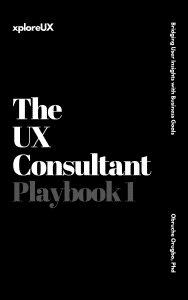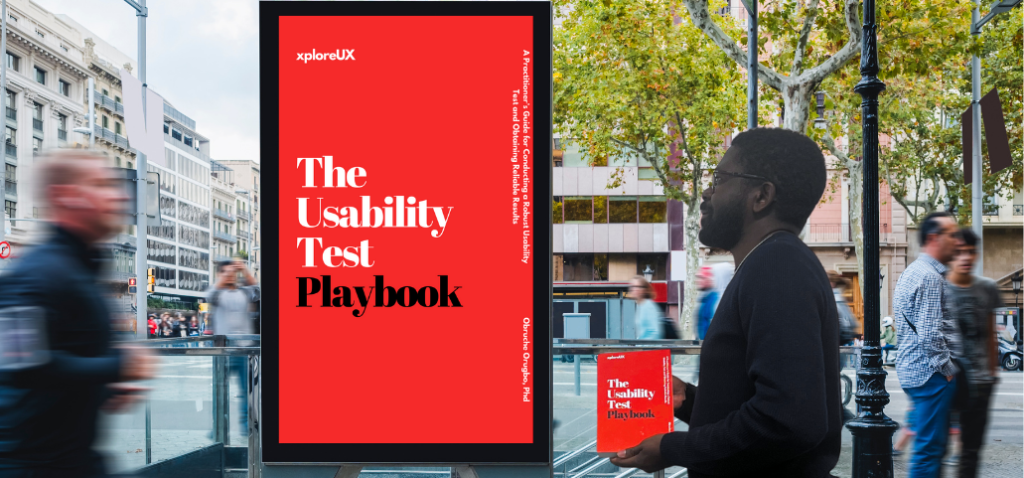
Rapid UX Research for Immediate Business Impact is a powerful approach that enables companies to gather user insights swiftly, adapt design strategies promptly, and maintain a competitive edge. By compressing traditional research timelines, teams can test assumptions in a matter of days or even hours, rather than waiting weeks for detailed analysis. This flexibility ensures that decisions are made based on real data and genuine user feedback, reducing the risk of investing significant resources in features or products that may not resonate with the target audience.
Organisations often face the challenge of balancing research quality with the need to move quickly. Rapid UX Research for Immediate Business Impact resolves that dilemma by focusing on the most pressing questions, employing lightweight methods, and distilling findings into clear recommendations. Rather than getting lost in endless testing sessions, teams gain the agility required to pivot when evidence suggests a change of direction is warranted. Rapid cycles of testing, feedback collection, and iteration increase the likelihood of a successful product launch or feature update.
Moreover, Rapid UX Research for Immediate Business Impact builds a culture where user experience becomes integral to strategic decisions. By embedding quick feedback loops into product development, employees across departments gain exposure to user needs. This fosters a shared commitment to delivering meaningful solutions that resonate with real people, leading to stronger brand loyalty and improved revenue in the long run.
Before implementing a process, it is vital to understand exactly what rapid UX research entails. This method involves conducting short, targeted investigations into user behaviour, preferences, and pain points. It differs from traditional research by condensing planning, execution, and analysis into a tightly controlled timeframe. The aim is to minimise delays and ensure findings translate swiftly into design changes or strategic decisions.
Rapid UX Research for Immediate Business Impact thrives on a clear definition of the research question. Teams must identify which aspect of the user journey, product feature, or interface element requires immediate insight. This targeted approach prevents wasted effort on overly broad investigations that may not yield actionable information. By honing in on a specific user issue, the research can remain concise and relevant.
One reason businesses adopt Rapid UX Research for Immediate Business Impact is the simplicity of data collection methods. Rather than extensive lab studies, they might conduct quick moderated or unmoderated sessions using online tools. The results are easier to analyse, and direct feedback can be shared with relevant stakeholders at once. By starting with a straightforward but focused question, organisations can build momentum and develop a habit of continuous user-centred inquiry.
When a product or service is in development, timing can affect user satisfaction and market share. Lengthy research cycles can delay essential updates and erode the trust of existing customers if issues remain unresolved for too long. In addition, competitors that adopt Rapid UX Research for Immediate Business Impact gain an advantage by addressing user demands faster. This focus on speed can make the difference between retaining loyal customers and losing them to rival offerings.
Rapid UX Research for Immediate Business Impact means moving quickly without sacrificing data integrity. By employing methods such as quick prototype testing or short surveys, product teams can gather directionally accurate user opinions. Though the sample size might be smaller compared to extensive studies, the insights generated within hours can guide decisions effectively. The ultimate goal is not perfection but immediate progress in design or feature improvements.
Speed also helps in seizing new opportunities. If an organisation detects a new user trend or identifies a market gap, timely insights can guide rapid feature development. When used repeatedly, quick research methods build a cycle of constant refinement, allowing for incremental changes driven by real-world evidence. Over time, this habit of rapid testing instils a culture of perpetual improvement and heightened responsiveness to evolving user needs.
Teams embarking on Rapid UX Research for Immediate Business Impact typically rely on research methods that provide direct feedback in a short period. For instance, guerrilla testing involves approaching participants in their natural setting—such as a café or a public area—to collect feedback on prototypes or design ideas. This avoids the wait time of scheduling formal research sessions, speeding up the process.
A/B testing is another popular tool. In this approach, teams present users with two different versions of a webpage, feature, or interface element. By tracking user behaviour across both variants, researchers can determine which design resonates more effectively. This method is ideal for producing tangible metrics—like click-through rates or conversion data—that quickly reveal user preferences. Rapid UX Research for Immediate Business Impact benefits greatly from A/B testing’s straightforward data points.
Online surveys and remote usability testing round out the range of methods. Remote sessions can be arranged in a matter of hours, connecting with participants who complete tasks and answer structured questions. The results are gathered almost immediately, allowing product teams to spot emerging issues and share them with decision-makers. This fast turnaround ensures that any pressing user concerns are addressed in the next iteration cycle, reinforcing a user-focused culture.
Selecting the right tools is crucial to achieving Rapid UX Research for Immediate Business Impact. The market offers numerous solutions that cater to quick, iterative testing. Some specialise in unmoderated usability studies, allowing participants to complete tasks while being recorded. Researchers receive video and audio feedback, enabling them to observe user behaviour without needing to schedule live interviews. This method saves substantial time while still capturing genuine reactions.
Collaborative platforms that combine surveys, heatmaps, and user session recordings can also enable efficient data collection. Surveys offer quantitative insights, heatmaps highlight user interaction patterns, and session recordings capture the user journey in real-world settings. By integrating these methods, it becomes simpler to pinpoint which design elements cause confusion or fail to motivate further engagement.
For high-speed data analysis, automated reporting features can be invaluable. Many contemporary tools interpret user actions and generate dashboards that summarise the biggest hurdles or most appreciated features. This makes it easier for product and design leads to pull relevant insights from the data and act on them rapidly. Rapid UX Research for Immediate Business Impact depends on reducing administrative overhead, and the right tools accomplish exactly that.
Conducting Rapid UX Research for Immediate Business Impact requires close cooperation across multiple departments. Designers, product managers, developers, and data analysts should align on goals before launching any quick studies. This starts with a succinct brief that clarifies the research question, the target demographic, and the action plan for using the results. When teams are aligned, the entire process—from planning to data collection to implementation—unfolds faster.
Clear roles and responsibilities within the team avoid duplicate efforts and missed opportunities. One individual might lead participant recruitment, while another compiles the findings into a slide deck or short report. A developer could simultaneously prepare prototypes or code changes, ensuring that the moment insights are available, updates can be released. By structuring these responsibilities effectively, the team maintains momentum and avoids the temptation to put off changes until “next time.”
Moreover, Rapid UX Research for Immediate Business Impact encourages open communication. Instead of large, infrequent meetings, brief daily or weekly check-ins can help teams stay informed and aligned. These shorter meetings allow for immediate updates on research progress, participant feedback, and preliminaryFinal Thoughtss. Promptly exchanging insights ensures that the entire group remains focused on tangible goals, reinforcing the shared objective of user satisfaction.
One common stumbling block is the time spent reviewing data. Researchers often over-collect information, leading to lengthy analysis phases. Rapid UX Research for Immediate Business Impact counters that by focusing on the primary question: “What do we need to know right now?” By limiting the scope of data collected, the interpretation phase becomes more manageable, resulting in clearer, more concise reports.
Establishing a consistent framework for reviewing results can help streamline this process. For instance, teams might follow a simple template: outline the research question, summarise the user feedback, then propose key takeaways and recommended actions. Rapid UX Research for Immediate Business Impact is built on speed, so any steps that reduce complexity can be valuable. If the final readout is a short document or a five-slide presentation, stakeholders can comprehend and act on the information more efficiently.
Though thorough research has its place, rapid efforts prioritise actionable outcomes. If an insight points to a specific design flaw or an overlooked user need, that information should be channelled directly into the product backlog. Any tasks that do not influence immediate decisions can be noted for later exploration. This way, the primary objective remains addressing pressing user issues to enhance overall satisfaction and product performance.
The final step in Rapid UX Research for Immediate Business Impact is to put the findings into action without delay. Once patterns or pain points emerge, product teams should already have a plan to apply the feedback. For instance, if participants struggle with navigation, designers can work on adjusting menus or simplifying steps. If conversion rates drop at a specific point, developers can revise that particular part of the user flow, potentially improving completion rates within hours.
Regularly updating a shared backlog ensures these user-centred tasks are visible to everyone. When teams see user-driven improvements listed alongside other development goals, it signals the importance of swift, evidence-based change. Rapid UX Research for Immediate Business Impact demands a direct line between discovering a problem and resolving it. This method not only reinforces the value of user input but also shows customers that their feedback translates into tangible updates.
It is equally important to measure the effects of any implemented changes. A second round of short testing or an A/B experiment can confirm whether the modifications resolved the problem or enhanced the user’s experience. This cyclical process of testing, application, and re-testing is what keeps a product evolving in harmony with user expectations. By consistently responding to feedback, businesses strengthen their reputation for attentiveness and remain relevant in a highly competitive market.
Embracing Rapid UX Research for Immediate Business Impact can transform the way teams gather and act upon user insights. This high-velocity approach ensures that vital feedback does not languish in lengthy reports, but instead is swiftly integrated into product and design decisions. The core principle is to answer pressing questions rapidly, thereby helping businesses adapt to shifting user demands and stay one step ahead of their peers.
Another benefit is the culture of responsiveness that emerges within an organisation. By frequently employing Rapid UX Research for Immediate Business Impact, employees learn to treat user suggestions as direct calls to action. The simplicity and speed of techniques like guerrilla testing, quick online surveys, and A/B experiments mean findings are more readily shared. This visibility prompts immediate improvements, which lead to higher satisfaction ratings, stronger user retention, and ultimately, a healthier bottom line.
Finally, Rapid UX Research for Immediate Business Impact provides a structured yet flexible method of continuous evolution. The cyclical process of testing, rapid implementation, and subsequent re-testing promotes persistent innovation. As new opportunities present themselves, teams already have the mindset and tools required to gather insights promptly, interpret them effectively, and respond with precision. With each cycle, products become more refined, and the organisation strengthens its reputation for user-centred excellence.








3 comments
I truly appreciate your technique of writing a blog. I added it to my bookmark site list and will
This is such a valuable article! 👏 I really like how you’ve managed to explain the topic in a clear and practical way—it feels authentic and easy to relate to. Reading it gave me some new perspectives that I can actually apply.